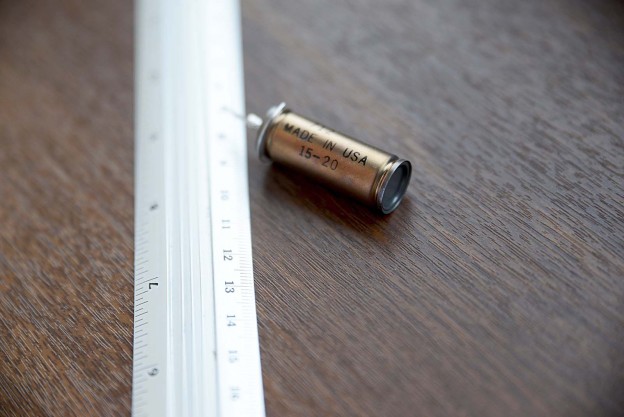
The previous blog entry on the uRADMonitor D presented a few details on this new radiation detector, stating that it will be able to detect not only gamma radiation, but also beta and alpha (including radioactive radon sources). One problematic issue was sourcing the proper detector, one that was both sensitive and small to fit the tiny space available in the already feature-crowded new uRADMonitor variant. After a slow process and intense communication with radiation detector manufacturers, we finally found a good candidate, putting price and performance in a reasonable balance: LND Inc and their excellent LND712 end window Mica Geiger tube.

To give it a quick test, the tube was hooked to one of the model A boards, and the voltage configured in software from 380V (which is used the SBM-20 and SI-29BG tubes) to 500V! Yes, the model A hardware supports that just fine with no other changes than a single constant changed in code, thanks to the excellent high voltage inverter circuit:


The result was as expected, and can be seen in the second image. The voltage on tube measurement is presented, part of the internal inverter feedback mechanism, responsible for having a regulated output matching the target voltage, in this case exactly 500V.

Compared to the SBM-20, the LND712 shows the same sensitivity at a smaller size.

But the Alpha and beta radiation sensitivity is the plus we’re after , and we get that just fine thanks to the mica end window.

The production cost, however, will inevitably increase, as a single LND712 gets close to $70, the tube only and this is just a little fraction of all the components that need to go in the new model D environmental dosimeter.
If it’s possible to drive the tube from the Model A are there any plans to be able to retro fit the earlier models to accept the newer tube and include Alpha and Beta radiation results?
Yes, that can be done, as the model A hardware easily supports boosting the tube voltage up to 500V or more, as detailed in the article. You’d need a modified firmware, and some holes in the aluminium enclosure.
However model A’s software wasn’t designed for interpreting the different radiation types. You’d only get the raw CPM and that’s it. But probably there’s more we can do here as well.